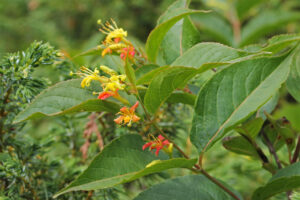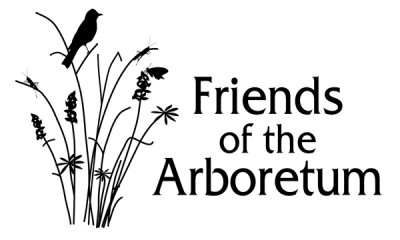
COMMON NAME: Dwarf Bush Honeysuckle
SCIENTIFIC NAME: Diervilla lonicera – in honor of a French traveler, Dr. N.
Diereville, who carried the plant to Europe in 1699 and lonicera from its
resemblance to the true honeysuckle.
FLOWER COLOR: Yellow
BLOOMING PERIOD: Mid-May through July
SIZE: 3 to 4 feet tall, 3 to 5 feet wide
BEHAVIOR: A low-growing, suckering shrub, often inconspicuous in native settings,
but which may become aggressive in new plantings.
SITE REQUIREMENTS: Tolerant of a wide variety of soil types including sand if the
water table is fairly high (dunes near river banks or beaches). Can be grown in full
sun, but does best in light shade. Tolerant of considerable shade.
NATURAL RANGE: Eastern North America from Newfoundland south to the uplands
of North Carolina, and west to Manitoba and Iowa. Occurs on appropriate sites
throughout Wisconsin, but most frequently in boreal (far northern) forest.
SPECIAL FEATURES: Its suckering habit makes it a useful (possibly aggressive)
ground cover in shade. Flowers are subtle, borne over an extended period and
attract bumblebees, butterflies, and hummingbirds. Fall color can be a rich bronze.
SUGGESTED CARE: Water well to establish new plantings. No follow-up care should
be needed. If necessary, plantings may be renewed by cutting to the ground every
few years in early spring.
COMPANION PLANTS: On relatively open sand it’s found with serviceberry,
spreading dogbane, pin cherry, black oak. On shaded slopes with large-leaved aster,
paper birch, common witch hazel, ironwood, zig-zag goldenrod, early meadowrue
and basswood
608-890-2555
staff@foamadison.org
